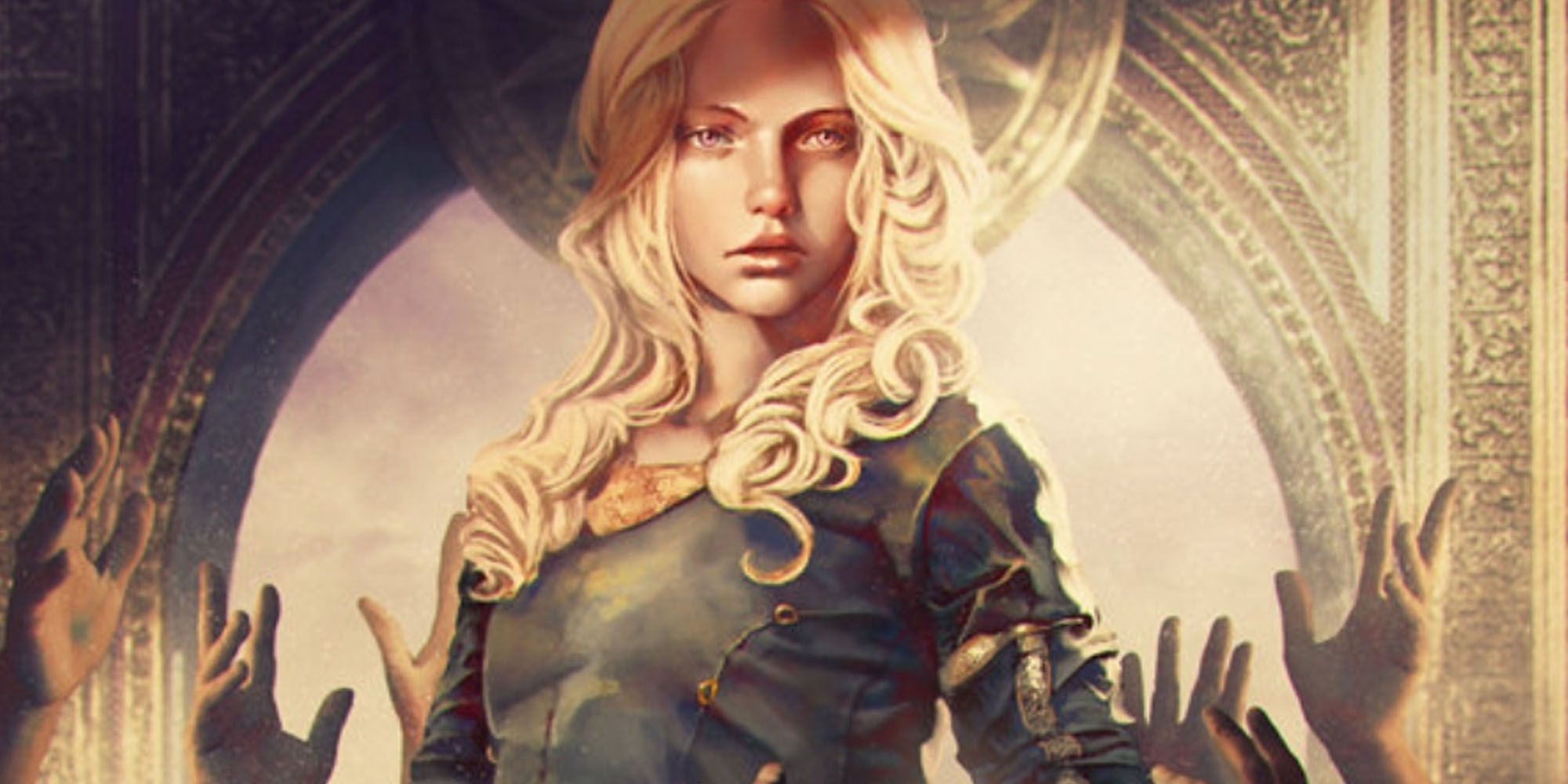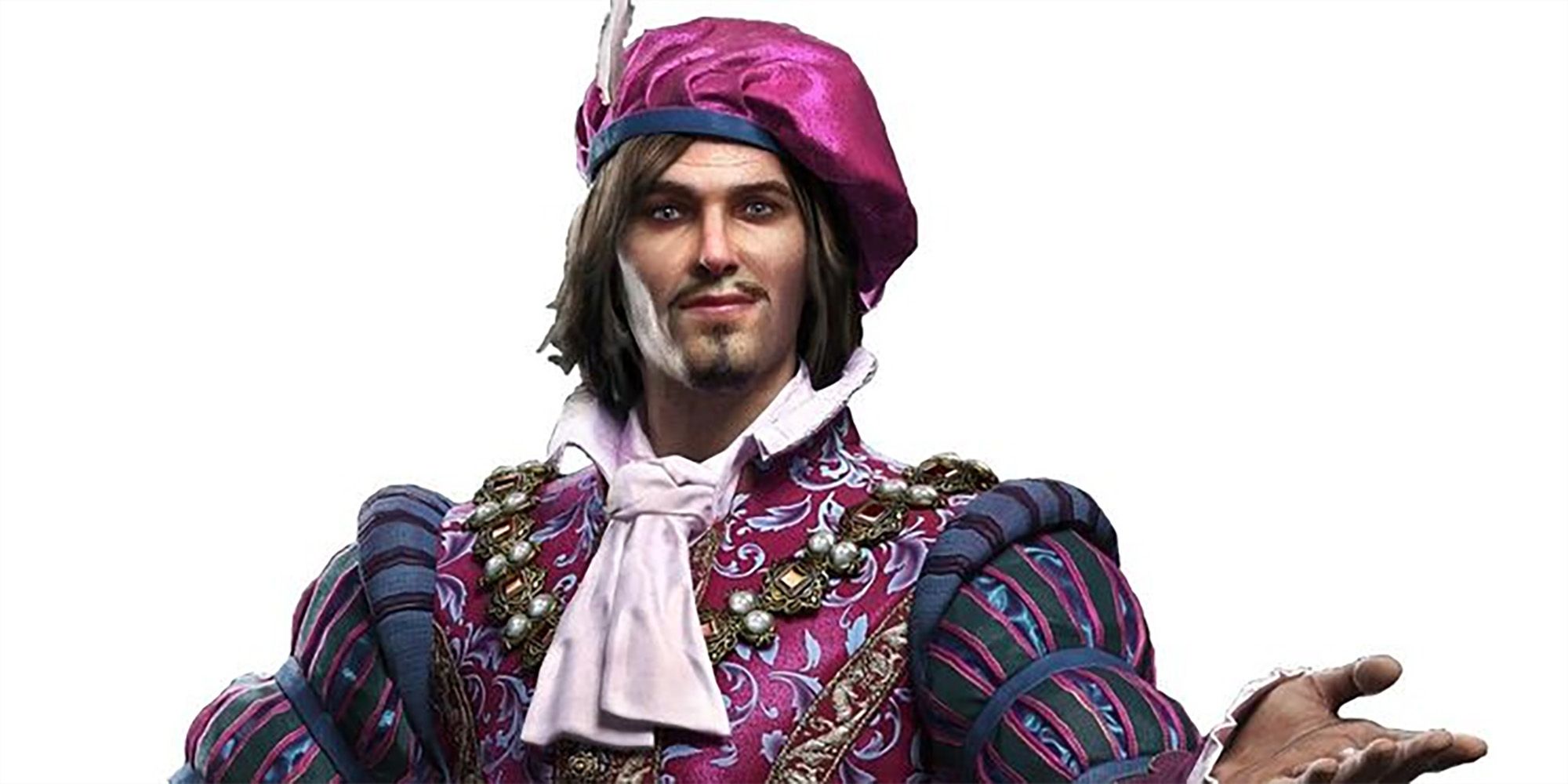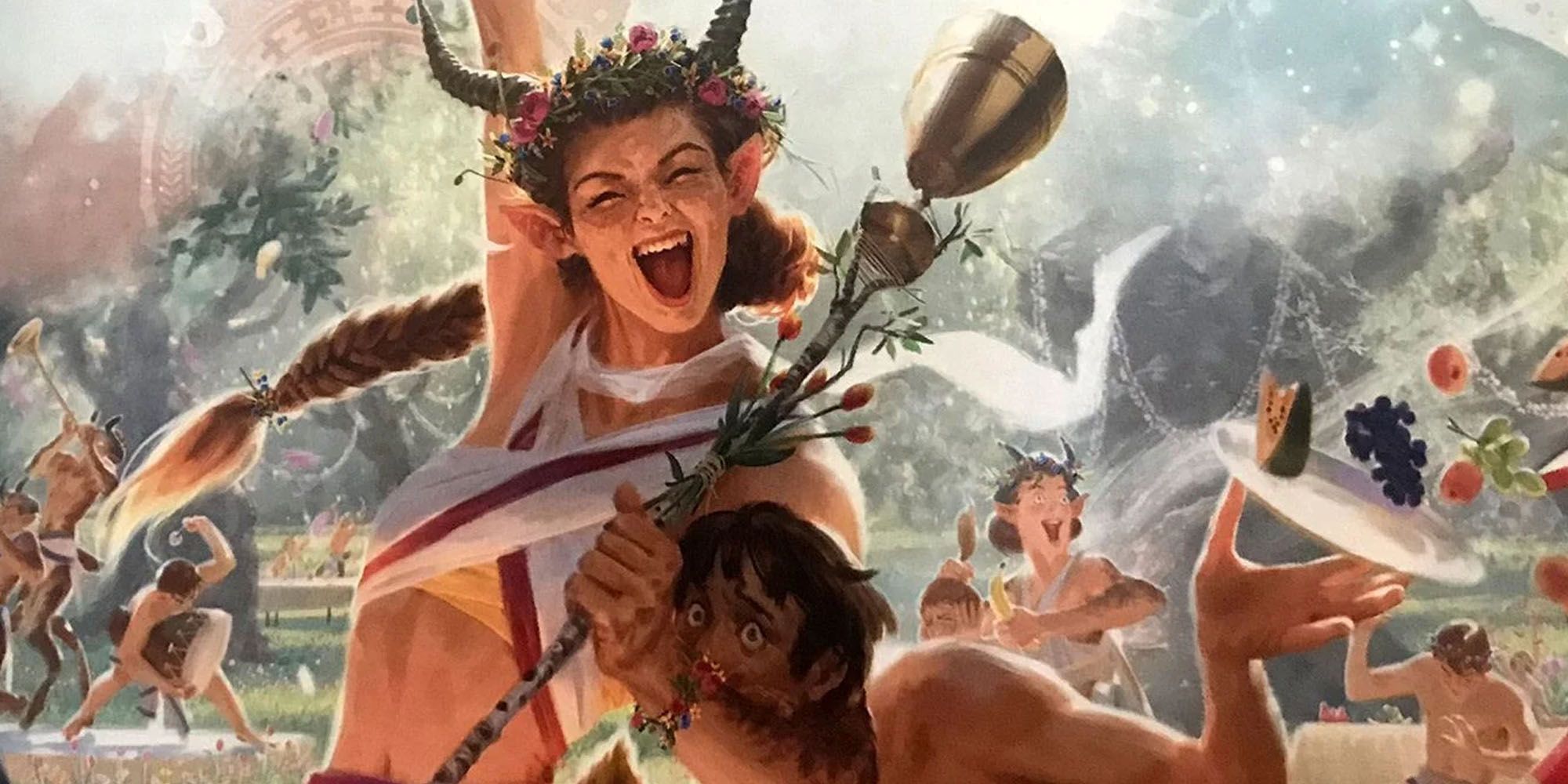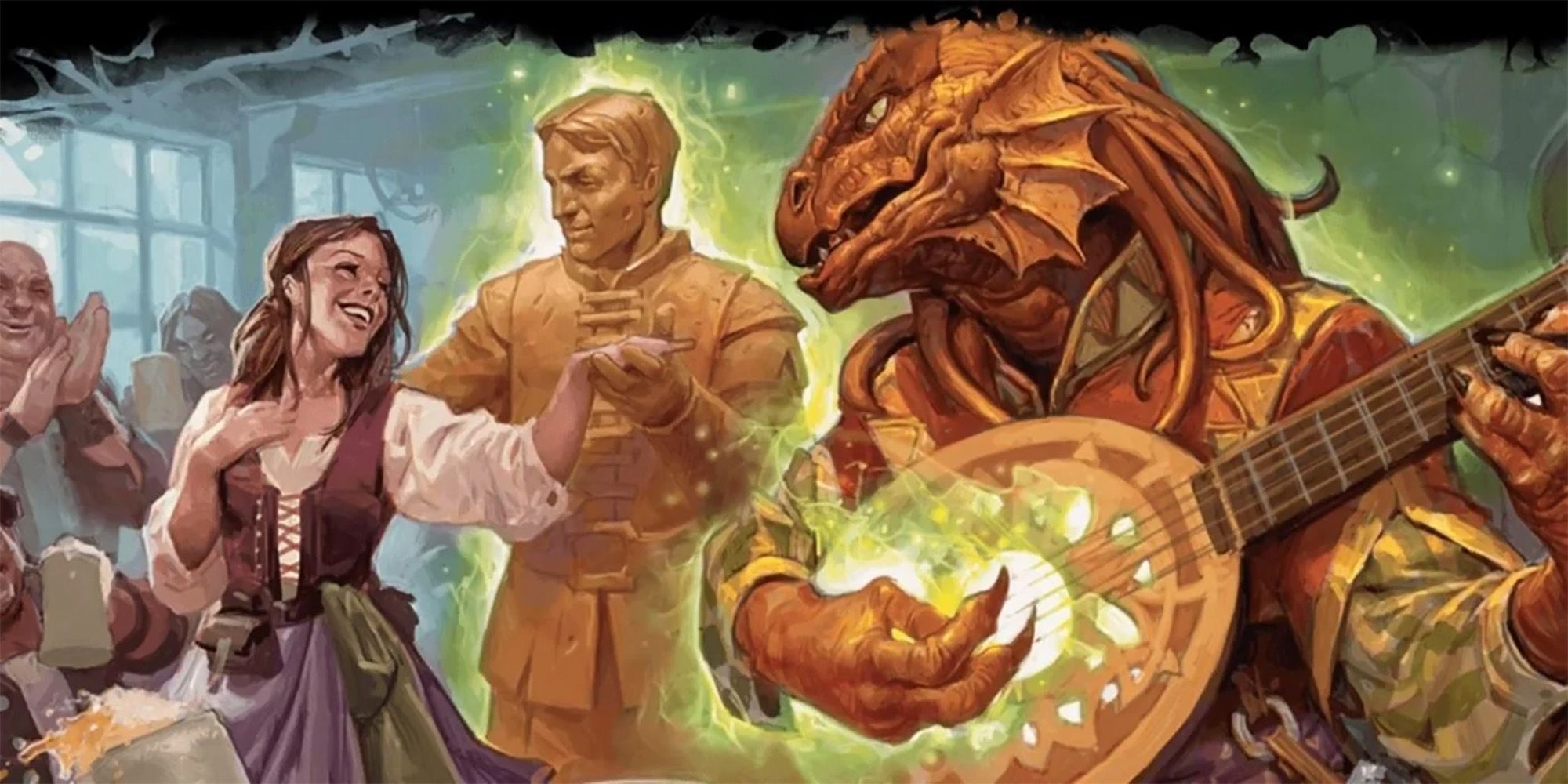In Dungeons & Dragons, Bards are considered a Jack-of-All-Trades class, drawing a little bit of their power from magic, endeavoring into some melee, offering healing and even negotiating on behalf of their party with finesse others can't imagine achieving. Bards who choose to study in the College of Glamour have either spent time mastering their trade in the elusive Feywild, or they've trained with someone else who did.
With a wide range of Bardic abilities already at their fingertips, adding the College of Glamour subclass to their repertoire grants mystical abilities that dazzle the mind, bewitch the senses and leave a lasting impression on all who've befallen to their charms. These Bards rely on enchantment and illusion magic to ensnare their audiences, but there are other factors to consider when building a College of Glamour Bard to ensure they are unforgettably powerful.
College of Glamour Bard Build Summary
|
Ability Scores (in order of importance) |
Charisma, Dexterity, Constitution, Wisdom, Intelligence, Strength |
|
Race |
Satyr |
|
Feats |
Fey Touched, Shadow Touched, Telepathic, Telekinetic |
|
Spells |
Minor Illusion, Disguise Self, Crown of Thorns, Dominate Person, Mass Suggestion |
Maximize the Glamour Bard's Charisma & Dexterity
Regardless subclass, Charisma is the Bard's core stat. Four of the Bard's most frequently-used skills -- Persuasion, Intimidation, Performance and Deception -- rely on CHA. Spell attacks and saving throws against the magic they wield are also empowered by their Charisma, which means getting maxing that out as soon as possible is a must.
Dexterity is a Bard's second most important stat because, regardless of their path, they are performers at heart. This means using skills like Sleight of Hand or Acrobatics to make a lasting impression on the audience they are attempting to captivate. It also doesn't hurt that they have potential to become incredibly stealthy thanks to a high DEX modifier.
Best Racial Options for a Glamour Bard
The satyr is one of the best choices for a College of Glamour Bard build. Not only are satyrs the original party animals, but they start the game with +2 CHA and +1 DEX. They are also considered Fey creatures rather than humanoids, which certainly explains their connection to the Feywild. To make them even more perfect, they gain proficiency in Persuasion and Performance right out of the gate, and they are proficient in one musical instrument -- which means the bard can grow their musical skills even more.
Half-elves and Changelings are also great options because they get +2 CHA. Half elves can add +1 to two other stats, and Changelings add +1 to one other stat, meaning they can boost their DEX score as well. The Yuan-Ti Pureblood race also gains +2 CHA and +1 Intelligence, which is an important skill for things like History, Arcana, Investigation, Nature and Religion checks.
The Best Feats for a Glamour Bard
There are a number of useful feats that can boost the skills for a College of Glamour Bard. Fey Touched, for example, allows the Bard to boost their CHA by +1, while also granting them access to the Misty Step spell, as well as one other spell from the divination or enchantment schools of magic. Similarly, Shadow Touched boosts CHA by +1 and teaches the Bard the Invisibility spell, as well as one other spell from the illusion or necromancy schools of magic.
Telepathic and Telekinetic feats both offer +1 CHA boosts and allow the player to work some interesting magic, like telepathic communication or moving things with their mind. Telepathic Bards can use Detect Thoughts and speak telepathically to a creature within 60 feat, while Telekinetics gain access to an invisible version of the Mage Hand cantrip and shove creatures up to five feet toward or away from them.
The Best Spells for a College of Glamour Bard
Early on, the Bard gains access to two cantrips of their choice from the Bard Spell list. Glamour Bards can make use of cantrips like Friends, Minor Illusion and Vicious Mockery, all of which come from the schools of enchantment and illusion. Level one spells like Charm Person, Disguise Self, Dissonant Whispers, Sleep and Tasha's Hideous Laughter are useful early on, and also fall into enchantment or illusion, which is this Bard's specialty.
Level two spells like Crown of Madness, Gift of Gab, Magic Mouth and Silence practically scream Feywild. As the Bard progresses to level three, they can pick up spells such as Catnap, Fast Friends, Major Image and Motivational Speech to leave a lasting impression on friends and foes alike. Charm Monster, Compulsion and Confusion join the mix at level four to increase the Bard's power to bewitch the minds of their enemies.
Dominate Person, Hold Monster, Geas, Mislead, Modify Memory and Seeming at level five all continue to bolster this Bard's ability to charm, manipulate and basically rewrite reality for those around them. Level six grants them access to Mass Suggestion, Otto's Irresistible Dance and Programmed Illusion. Otto's Irresistible Dance is one of those spells that seems like it was crafted in the Feywild and used to make creatures dance themselves to exhaust and eventual death.
As the Bard continues to gain power, they begin learning Power Word spells, like Power Word Stun, Kill or Heal, all of which are so powerful it can take out an enemy in a single casting. All Bards also gain access to Magical Secrets at certain levels that allow them to delve into other class spell lists for incredible spells like True Polymorph, which can permanently change someone so severely, they can actually become a dragon, or Wish, which potentially alters the fabric of reality -- sometimes to the detriment of the caster.





